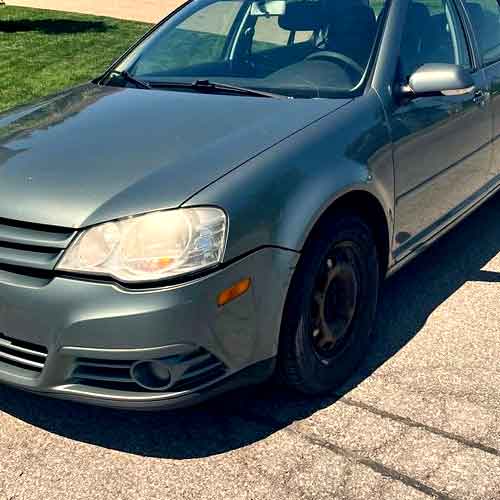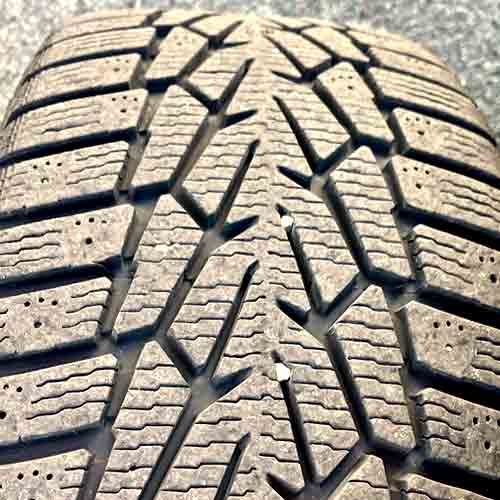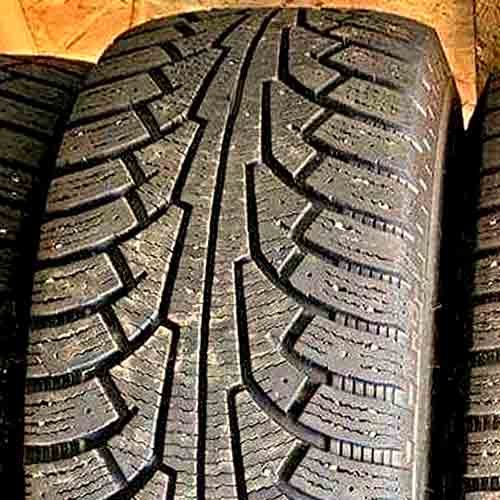Nokian Nordman 7 and NordMan 5, both celebrated for their superior winter performance, are set to go head-to-head. Let’s explore their offerings and crown the ultimate winter tire!

Table of Contents
Tread Life
Tread life is notably affected by rolling resistance, determined by the tire’s weight and rubber composition.
Therefore, the heavier Nokian Nordman 7 (review) faces challenges in this area.
Its weight puts additional stress on the tread, and the widely spaced lugs endure more weight pressure, wearing out faster.
While its softer tread compound isn’t helping that either.
Conversely, the lighter Nokian NordMan 5, with closely-packed lugs, experiences less friction and hence slower tread wear.
This tire’s stiffer rubber compound may limit the overall ride comfort, but you sure get superior tread life, no doubt. Though, keep in mind, the overall difference is pretty low between the two, and yes, you also don’t get any tread-wear warranties with them too.
Snow Performance
The Nokian NordMan 7 exhibits superior performance in snowy conditions due to its more advanced features.

Its additional gaps/biters enable the capture of snow particles, improving snow-to-snow contact and enhancing traction.
The accumulated snow forms a contact patch with the ground as the tire rotates, improving the traction because snow bonds more effectively to itself than to rubber.
Additionally, the tire’s more pronounced directional tread pattern generates a more effective paddling effect, scooping up and propelling the snow backward, thereby producing forward momentum.
In contrast, the Nokian NordMan 5 lacks both these features, it can’t hold as much snow, and its less aggressive directional pattern, can’t provide as efficient of the overall paddling on soft snowy terrains.
Wet Traction
Wet traction is mainly governed by two variables: tread design and rubber composition. They influence the tire’s grip and resistance to hydroplaning, which are the twin pillars of wet performance.
Let’s start with grip.
Wet Grip
Despite both tires boasting plenty of siping and flexible tread rubber, the Nordman 5 still falls short, whereas the Nokian 7 stands out with its greater number of biters.
To put simply, its more aggressive siping offer better water wiping abilities, while the multiple in-groove notches bite on to the rather cleaned up, formerly wet road.
On the other side, the Norman 5 missing with as many multi-angled biters lacks here.

For folks who don’t know: Sipes basically suck water in their slits, and clear off the road that way, so that the rubber can properly sink its teeth in, and grip.
Hydroplaning resistance
Hydroplaning happens when a layer of water forms a barrier between the tire tread and the road, causing the tire to lose traction.
And here, the Nokian NordMan 7 yet again, takes the lead, showcasing higher float speeds in both straight and curved aqua tests.
Float speeds, simply put, is the maximum speed a tire can achieve over standing water.
Here the Norman 5 with missing (as efficient of the) interconnected tread voids, can’t disperse water off as quickly, as its counterpart.
Comfort Levels
Factors such as road noise and vibration absorption predominantly determine tire comfort.
And considering both, you get to see some mixed performance values.
Let’s start with noise.
So noise is formed when air particles hit the tread walls, and here, although both tires allow similar amount of air to get in (and strike around), the Nordman 5 still gets to be better, due to its stiffer rubber compound.
This rubber, basically does not produce as much in-groove resonance as its competitor (it happens when noise bounces off the walls of the tread, amplifying the overall affect).
Though this rubber ironically also puts the tire back in second part of overall comfort performance.
You see, with softer tread compound, the Nokain 7 takes the lead soaking up the vibrations of the road in a better way, whereas with Norman 5, you get feel the rides a bit more jittery.
So in essence where the Norman 5 does better with noise, the 7, is superior in diminishing the imperfections of the road.
Dry Traction
Dry traction unravels into two distinct facets: directional grip and handling. Let’s delve into each.
Directional Grip
The dry grip narrative is mainly dictated by the tire’s central tread region as it enjoys the most intimate contact with the ground.
That’s why it makes sense, why out of both tires, the Norman 7 takes the upper hand, with its more consistent rubber to road contact forming ability (with it’s central most rib).
On the other side, due to the longitudinal channel running right in the middle, the Nordman 5 isn’t able to provide you with as much rubber footprint, so naturally grip gets compromised.
Handling
A tire’s prowess at cornering or its overall sideways traction hinges on the performance of its shoulder lugs, and two key factors come under scrutiny here.
Firstly, the efficiency with which these lugs connect with the ground as the tire spins. And secondly, the degree to which these lugs bend during this dynamic process.
And in both aspects, the Nokian NordMan 5 outshines its counterpart. Its compact pattern secures a larger ground contact, and its lighter weight ensures its lugs do not flex excessively during cornering.
Still confused about lateral traction, well read this:
When the tire corners, the majority of its weight shifts toward the shoulders, and their bending can disrupt the balance between oversteer and understeer, leading to sluggish steering response.
To Conclude
Let’s summarize all of the performance metrics above.
In snowy conditions, the NordMan 7 outperforms its older variant, due to its advanced design and better traction.
In wet conditions, the NordMan 7 also leads due to superior grip and hydroplaning resistance. However, NordMan 5 has a longer tread life and produces less road noise, while the NordMan 7 offers better vibration absorption for a smoother ride.
In dry conditions, NordMan 7 has better directional grip, but NordMan 5 is superior in handling and cornering.
So in the end, its pretty fair to say that each tire has its strengths and weaknesses and the choice should depend on your specific requirements, and yes of course conditions.